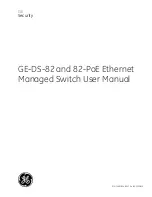
18
Messages begin to appear in your terminal emulation program window.
Caution
Do not press any keys on the keyboard until the messages stop
. Any keys pressed during this time are interpreted
as the first command typed when the messages stop, which might cause the router to power off and start over. It
takes a few minutes for the messages to stop.
You may see different startup messages:
•
If you see the following messages, the router has booted with a configuration file and is ready for initial configuration using
the Cisco Router and Security Device Manager (SDM):
yourname con0 is now available
Press RETURN to get started.
See the “Initial Configuration Using Cisco Router and Security Device Manager” section on page 19 to learn how to
configure your router using SDM or to learn how to obtain SDM and install it on your router.
•
If you see the following messages, the router has booted and is ready for initial configuration using the setup command
facility or the command-line interface (CLI).
--- System Configuration Dialog ---
At any point you may enter a question mark '?' for help.
Use ctrl-c to abort configuration dialog at any prompt.
Default settings are in square brackets '[]'.
Would you like to enter the initial configuration dialog? [yes/no]:
To learn how to use the setup command facility to configure the router, see the “Initial Configuration Using the Setup
Command Facility” section on page 19. To learn how to use the CLI to configure the router, see the “Initial Configuration
Using the CLI (Manual Configuration)” section on page 21.
Note
If the
rommon 1>
prompt appears, your system has booted in ROM monitor mode. For information on the ROM
monitor, see the router rebooting and ROM monitor information in the
Cisco IOS Configuration Fundamentals
Configuration Guide
for your Cisco IOS software release.
You can access this document at the locations described in the “Where to Go Next” section on page 24.
6
Perform Initial Configuration
You can configure your router by using one of the following methods:
•
Cisco Router and Security Device Manager (SDM)—If your router was purchased with a VPN bundle, SDM is installed on
the router. For instructions on configuring your router by using SDM, refer to the
Cisco Router and Security Device
Manager (SDM) Quick Start Guide
that shipped with your router. See the “Initial Configuration Using Cisco Router and
Security Device Manager” section on page 19 for additional information.
•
Setup command facility—You can use the setup command facility to configure basic router information. After the
configuration file has been created, you can use the CLI or SDM to perform additional configuration. See the “Initial
Configuration Using the Setup Command Facility” section on page 19 for additional information.
•
Command-line interface (CLI)—If you prefer to use the Cisco IOS CLI, see the “Initial Configuration Using the CLI
(Manual Configuration)” section on page 21 for instructions on how to use the CLI.
Note
You need to understand how interfaces are numbered so that you know which interface you are configuring. If you need
help with interface and port numbering, see the “Interface Numbering” section on page 22.















































